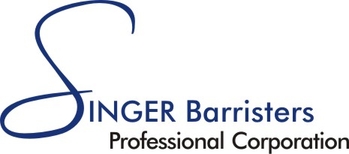Auto insurers in Ontario would have you believe that your high premiums are as a result of fraudulent claims and claims by individuals who are not seriously enough injured. Now they are again claiming the sky is falling over a recent Court of Appeal decision that took the Financial Services Commission of Ontario (the government tribunal for no-fault claims) to task for not moving cases along fast enough and opening the door for claims to go directly to court instead of through the tribunal’s mediation process. The Court of Appeal decision is based in large measure on the fact that the FSCO mediation process does not do what it is supposed to do in a timely fashion- namely allow injured motorists to be paid rehabilitation benefits. This systemic delay is a windfall for insurers who routinely deny treatment and simply sit on their money, money which is earmarked for benefit payout. The Insurance Bureau of Canada would have you believe that this court decision could cost insurers $300 million and that it will be yet another reason why they will be forced to increase premiums.
Auto insurance companies have a captive market. The law requires insurance for you to drive. A recent spate of mergers and acquisitions means a limited number of for-profit, stakeholder- driven, multi-national corporations from whom you can buy this insurance. The reality is that if there were no fraud and fewer claims, your premiums would not decrease. They never have and they never will. So as policy holders we have a right to demand from our insurers that they fulfill their end of the bargain, namely paying out benefits in a timely fashion.
Under the no fault regime, you have an entitlement to benefits from your own insurer if you are involved in an accident. The details are beyond the scope of this article but the primary purpose of no-fault is arguably to ensure that your rehab costs are covered. Yet insurers routinely deny payment for treatment such that many individuals are left unable to go for the treatment they need, which is usually not covered by OHIP. Your insurance company will typically say that if you have a standard soft tissue injury (whiplash, neck and back pain, headaches- and by far these make up the majority of accident injury claims in Ontario) since your symptoms are self-described and typically not apparent on any x-ray, ultrasound or MRI, that there is nothing seriously wrong with you. This is their justification for not paying the no-fault benefits to which you are entitled under your policy. This decision is initially made not by a doctor who meets with you, but rather by an insurance adjuster who has not met with you and has no medical training., and relies usually upon the opinion of a doctor who earns a living not from treating patients but from writing reports for insurance companies, and who will have met with you for no more than an hour. You are simply being lumped into a category.
If you are not at fault for the accident, you also have a right to sue the other driver in a third party claim (whose tab will be paid by her insurance) for pain and suffering, unlike in the no-fault regime. But the insurers here take the same position. If you have soft tissue injuries they will say that your case does not meet the level of seriousness required by law to sue (not all claims are eligible- the injuries must meet a certain level of seriousness but what is serious is the subject of most tort-related litigation). The Court of Appeal says if you can go on with all of your pre-accident activities but now must do so in pain, fatigue, with constant headaches and stress, that this rises to the level of seriousness to be compensated for pain and suffering. Yet insurers routinely deny settling claims on the basis that your injuries are self-reported and not diagnosable on any objective test. These cases at trial come down to credibility, i.e. whether you and your witnesses are believed by the court or not. But the insurance companies should not be forcing these claims to trial, often taking years and tens of thousands of dollars, when the case could have been settled at a very early stage for a reasonable amount of money far less than the cost of litigation. Of course, the law is not so black and white. Nonetheless, the general attitude of insurers results in injured parties not receiving their no-fault benefits, thus forcing them to retain a law firm to sue under the no-fault regime for these as-of-right benefits, while also forcing the third party claimants through the lengthy litigation process, again to obtain benefits for which all policy holders indirectly pay premiums.
As policy holders of these corporate behemoths who make billions a year in profits in part by refusing to honour their contractual obligations, it is time for the public to stop accepting the lies of the insurers regarding the rising cost of the premiums, and demand the benefits to which they are entitled. It is also time for those who diligently pay their premiums on time with the expectation of fairness to demand our provincial government crack down on the unfair corporate policies of the insurers. The government has given free rein to the insurers to protect the public interest and the insurers have squandered the public trust in this regard.
Darryl Singer is a civil litigator in Toronto
